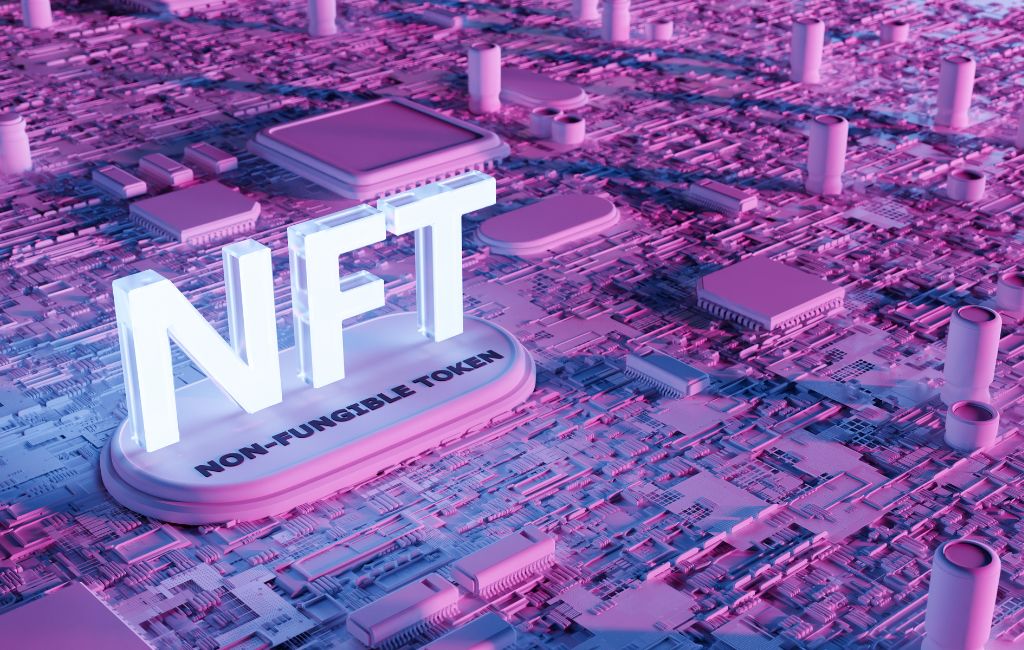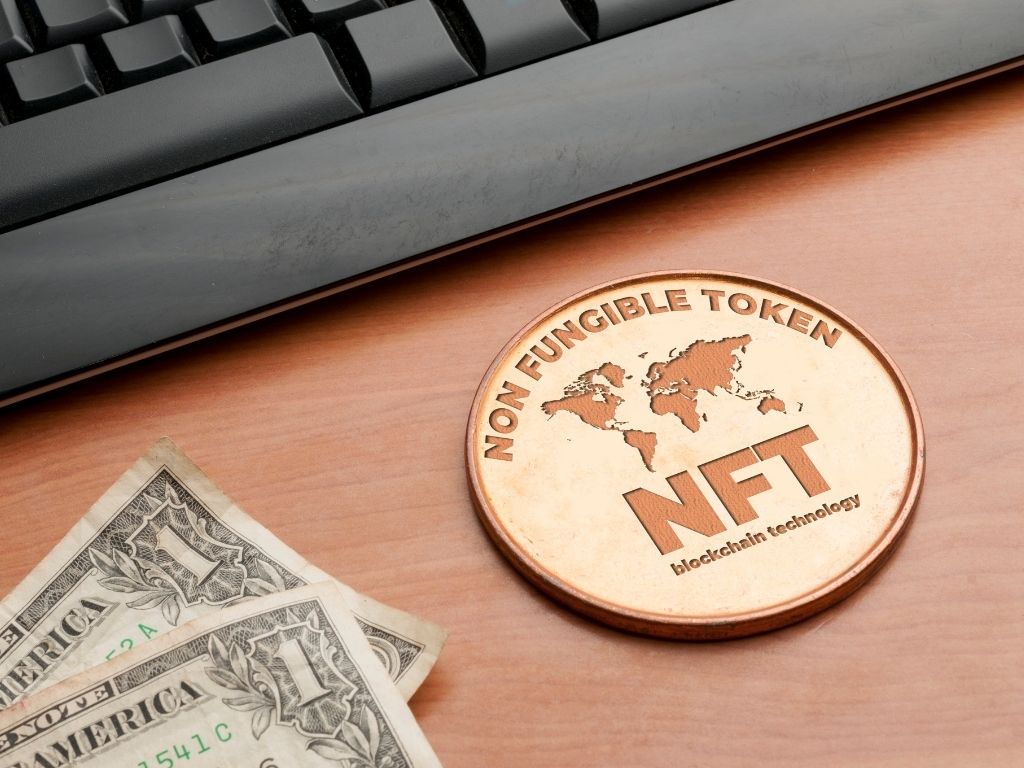Top 12 Amazing Historical NFT That Shaped The Foundation of Web3
NFT archaeology is a new field of study that aims to excavate the NFT endeavors that laid the groundwork for modern civilization. All modern NFTs are founded on the foundation formed by these ancient relics, making this research significant. As an NFT archaeologist, I have committed considerable time to on-chain research and discovering old projects on Ethereum, Bitcoin, and Namecoin. Having an early mint date is crucial, but whether or if a project innovates or advances the area matters. The recent hype around CryptoSkulls, the second 10k PFP (profile-picture) project, has rekindled a significant interest in older NFTs. I chose the ten most historically substantial projects after reviewing hundreds of others.
This list will help novices understand the first NFTs with the most significant cultural value.

-
Linagee Name Registrar (August 8, 2015)
In October 2022, NFT archaeologist Mason Keresty aimed to deconstruct every contract on the first 300,000 blocks of the Ethereum blockchain. He was tasked with locating the earliest NFTs recorded on the digital ledger. Perhaps his most significant discovery was the Linagee Name Registrar, dated precisely one week after Ethereum’s first public debut. Nevertheless, is this the first-ever NFT? Not entirely The Lineage Name Registrar is the first Ethereum smart contract known to date. So, what is it exactly? In current terminology, it is most comparable to the Ethereum Name Service (ENS). This simple service eliminates the need for users to provide long IP addresses or cryptocurrency wallet addresses when transferring wallet information. While not an NFT in the traditional sense — it predates the whole NFT movement by many years — it does include the underlying technology that essentially led to the current widespread use of NFTs.
-
Quantum (May 2014)
Quantum, released during the first beginnings of blockchain technology, is usually recognized as the first non-fungible token ever created. Kevin McCoy, a digital artist, developed Quantum on the pre-Ethereum Bitcoin offshoot Namecoin in 2014. It languished and was forgotten for years until it was sold at auction for more than one million dollars in June 2021. After the million-dollar transaction, analysts questioned Namecoin’s authenticity due to a distinctive trait. Every 250 days, Namecoin users must renew their ownership of everything mined on the network. Before McCoy’s successful sale of Quantum, he forgot to renew the NFT for years, which allegedly enabled Free Holdings, Inc. to gain the ownership rights to the oldest NFT. McCoy has successfully brought this piece of NFT history to the notice of the general public, and the auction is still ongoing.
-
Curiosity Card (May 9, 2017)
Curio Cards are the collectible card initiative equal to Rare Pepes and Spells of Genesis on Ethereum. Curio Cards are famous among collectors of vintage NFTs and were among the earliest pieces of crypto art on Ethereum, more than a month before CryptoPunks. Seven other artists produce 30 different cards. A few of the most competent collectors have compiled a complete collection. Some may debate the inclusion of Curio Cards on this list. Curio Cards could have been more technologically innovative, considering trading card-style Bitcoin businesses existed before its introduction. Nonetheless, I give them credit, along with a few other communities, for debunking the “CryptoPunks were the original NFT” myth that was common until August last year.
-
Pixel Map (November 17, 2016 – Ethereum)
In November 2016, Ken Erwin created a decentralized version of the artwork and uploaded it on the Ethereum blockchain. It is an effort modeled after billboards in which anybody may buy a tile and alter its image, transforming the billboard into an incomplete collaborative piece of NFT art. Further demonstrating that a blockchain with smart contracts may push the limits of what an NFT can be. In the future, when NFTs continue to advance, it will become more apparent that PixelMap was a stepping stone from very early primitives to incredibly complex smart contracts. Ken took it a step further by saving the image data for each pixel on the blockchain, making PixelMap one of the first NFTs to store complete image data on the blockchain.
2. Pixel map (November 17, 2016)
NFT artwork from Ken Erwin, on Ethereum network.
This artwork was inspired by “The Million Dollar Homepage from 2005.” pic.twitter.com/MyysDY1h6S
— NFT Snack 👋 (@nft_snack) February 7, 2022
-
MoonCats (August 9, 2017 – Ethereum)
These collectible 8-bit cats, with a total amount of 25,440, were the first cat-themed NFTs on Ethereum. CryptoPunks inspired their founders, yet they innovated in an often-overlooked meaningful way. You may pick anything you like while making a CryptoPunk. All 10,000 were manufactured off-chain; therefore, the first collectors to discover the initiative quickly purchased the rarest punks. There were better decisions than this. The MoonCats team, Ponderware, devised an innovative technique for manufacturing MoonCats. When collectors hit the mint button, they had yet to learn what the distributed ledger would create. By assigning the attributes of a cat on-chain, a unique cat is created each time, and the collector is oblivious to its presence until the transaction is verified. Given the billion-dollar generative art NFT industry, this is how coins work.
Nonetheless, it was groundbreaking when it initially happened. Early in 2021, when NFT Archaeologists discovered the project, they sold out the contract in less than twenty-four hours. The market capitalization of MoonCats rose from $0 to $100,000,000. I saw the event in a Clubhouse room. As soon as I realized the significance of the situation, I hopped on my computer and started searching for long-lost NFT projects. I began my profession as an NFT archaeologist after discovering Digital Zones three hours later. Other archaeologists, like Adam McBride, got their start because of this event. MoonCats will probably be found in any research into the origins of on-chain generative art. These warrants include them on the list.
-
Digital Zones (August 29, 2017 – Ethereum)
In retrospect, it is clear that the advent of these Digital Zones marked a turning point in the growth of crypto art. Inspired by Yves Klein’s 1959 Zones of Immaterial Pictorial Sensibility, the Canadian artist Mitchell F. Chan released on the Ethereum blockchain in 2017 101 Digital Zones of Immaterial Pictorial Sensibility. Mitchell understood on a fundamental level that the breakthrough in non-fungible tokens was connecting the blockchain to an image and leveraging the blockchain as the medium. And there is no more effective way to make this point than by omitting the idea entirely. The preceding receipt images are just for the wrapper, not the tokens themselves. The art is undetectable and devoid of a visual element. Mitchell inserted a ceremonial purpose into the smart contract as though this were not an exceptional accomplishment in and of itself. In a 34-page Blue Paper, he outlined the only way to own a piece of art. How? Your token is burned after this procedure, and the artwork becomes a part of your vision. This message about ownership connects with a large audience and combines art and business. Digital Zones is one of the most complex pieces of cryptographic art. Digital Zones was the first conceptual piece of art created on Ethereum, and it demonstrated how we could use a smart contract to push the boundaries of what an artist can create. Mitchell laid the foundation for all later attempts requiring on-chain code development, such as Autoglyphs, CryptoArte, Chromie Squiggles, and Fidenzas. They have sold for up to $1,532,500 at Sotheby’s and have won praise from both the crypto and traditional art communities.
-
Eggs (July 27, 2014 – Namecoin)
Namecoin is a derivative of Bitcoin. In addition, it was the only other project on which Satoshi Nakamoto, the creator of Bitcoin, worked. It was implemented in 2011 as a decentralized registration service analogous to the well-known ENS names. A few years later, in 2014, people discovered they could attach metadata to their names as a decentralized key-value pair. Some users choose to include a profile picture alongside their names. Thus, the first PFPs were established. Two hundred seventy-seven registered PFPs were “Twitter Eggs,” the most fundamental Twitter avatars. According to enthusiasts, eggs are among the chain’s first collectible NFTs and PFPs. There are fourteen distinct colors available. Egg holders have just established a decentralized autonomous organization (DAO), and the community becomes stronger daily.
-
SaruTobi (May 6, 2016 – Bitcoin)
On December 19, 2014, teenage iOS developer Christian Moss released the game SaruTobi to the App Store. In the game, you spun a monkey by touching the screen to determine how far he could fly. Christian wanted to let players of SaruTobi buy in-game products using Bitcoin, but Apple would not permit this. Instead, he allowed players to earn tiny Bitcoin quantities while playing. As a result, one of the first play-to-earn games was created. Several years later, Christian saw what EverdreamSoft was doing in Spells of Genesis using tokenized game materials, and he decided to offer NINJASUIT for SaruTobi in a similar method. It was the first NFT skin, NFT power-up, and usage of an NFT in a play-to-win game.
Nonetheless, the story continues. Christian believed that letting Spells of Genesis fans utilize their in-game items would encourage them to play his game. Specifically, he might link their Counterparty mobile wallet to SaruTobi so that SaruTobi could see the tokens in their wallet. Then, depending on their token accumulation also may provide access to more game aspects. Christian made this feature available in June 2016 when he made the Spells of Genesis SATOSHICARD, SARUTOBICARD, and CNPCARD playable in Sarutobi. When interoperably deployed, the three Spells of Genesis cards were in SaruTobi, the multi-trillion dollar gaming and social media sector suffered its first breach, the first time an NFT was interoperable across two different games. The metaverse sprang from the ashes of Web 1.0’s predecessor. However, will fully understand the significance of this moment once the walls of the gaming and social media industries break.
Also read, What Is White Label NFT Marketplace and How Does It Work?
-
Genesis’ Spells (March 11, 2015 – Bitcoin)
Spells of Genesis is a collectible card game that utilizes the Bitcoin network. Each card is an artistic portrayal of an important event in the blockchain’s history. EverdreamSoft, the creator of Spells of Genesis, has introduced FDCARD as the first tokenized game asset. The importance of this event cannot be overstated since it ushered in a new era of gaming in which players manage their digital assets. It was the beginning of a rising wave that would eventually result in gamers recovering power from the centralized governing institutions to whom they are, in many ways, still subject. Spells of Genesis is the starting point for tracing the origins of blockchain gaming.
-
Cryptokittens (November 23, 2017 – Ethereum)
In 2017, during the height of the cryptocurrency bubble, the breeding of these lovely kittens became so popular that they “broke” Ethereum by driving up gas prices to a degree which was the first instance of a blockchain game becoming viral, and the term “NFT” was coined in response to the commotion. In addition to being the first ERC-721 token, CryptoKitties was also the first cryptocurrency. ERC-721 is an open standard that describes how to produce non-fungible receipts on EVM (Ethereum virtual machine)-compatible blockchains. The vast majority of non-fungible tickets continue to adhere to this standard. It is widely assumed that these cats are terrible investments owing to their constant availability, but this is not the case. There will only ever be 100 founder cats and 50,000 Gen-0 cats, plus there are several more niches for devoted collectors to investigate. Numerous OGs, including Pranksy, Chris Dixon, Nate Alex, and the developers of Axie Infinity, got their start with NFTs via CryptoKitties. If you meet with a breeder from that era, they would likely be keen to convey their emotional relationship with these cats. I still own the cats I reared during the height of their popularity, and I want to pass them on to my descendants.
-
Rare Pepes (September 9, 2016 – Bitcoin)
No list of historical NFTs would be complete without Rare Pepes. These collectible cards are a cornerstone of internet culture and one of the first creative ventures on the blockchain, helping to establish the crypto art movement. Series 1, Card 1, honoring Satoshi Nakamoto (the person or entity that created bitcoin), is the most popular of the almost 1,800 cards published throughout 36 series. It’s known as the Nakamoto Card, and it’s required to access the 300 Club (of which there are only 300).
-
CryptoPunks (June 23, 2017 – Ethereum)
Even for newbies, these 8-bit avatars are almost self-explanatory, and active members of the NFT community should not be surprised that CryptoPunks topped this list. Matt Hall and John Watkinson, two Canadian software programmers, were the originators of the 10k PFP trend that has recently swept over Twitter.
These avatars are considered art pieces and collectibles and have grown to become the most well-known NFT in the world. Some of the rarest alien relics, of which there are just nine, sold for almost $11 million at auction, which is the conclusion obtained. The most prominent NFTs historically. Never fear if you’ve never heard of Bitcoin or Namecoin non-fungible tokens! Emblem Vault, a unique cross-chain bridging technology, may be transferred safely on OpenSea, despite its first intimidating nature. The trade volume on Emblem Vault has hit 29,000, and if you want to keep up with the most recent transactions, the Emblem Vault Bot is an ideal option. This is a partial compilation of early NFT endeavors. If you want to learn more about early Ethereum efforts, go here. And a Bitcoin and Namecoin NFTs Archaeologist by the name of White Rabbit produced a fantastic Medium piece that is worth reading.
Stay informed with daily updates from Blockchain Magazine on Google News. Click here to follow us and mark as favorite: [Blockchain Magazine on Google News].
Get Blockchain Insights In Inbox
Stay ahead of the curve with expert analysis and market updates.
latest from tech
Disclaimer: Any post shared by a third-party agency are sponsored and Blockchain Magazine has no views on any such posts. The views and opinions expressed in this post are those of the clients and do not necessarily reflect the official policy or position of Blockchain Magazine. The information provided in this post is for informational purposes only and should not be considered as financial, investment, or professional advice. Blockchain Magazine does not endorse or promote any specific products, services, or companies mentioned in this posts. Readers are encouraged to conduct their own research and consult with a qualified professional before making any financial decisions. The featured image used is just a creative depiction of the title and it does not intend to hurt sentiments of any person or institution. If it hurts anyone sentiments, please do not hesitate to reach out to Blockchain Magazine.

 Bitcoin
Bitcoin  Ethereum
Ethereum  XRP
XRP  Tether
Tether  Solana
Solana  Dogecoin
Dogecoin  USDC
USDC  Cardano
Cardano  Lido Staked Ether
Lido Staked Ether  TRON
TRON  Chainlink
Chainlink  Avalanche
Avalanche  Wrapped stETH
Wrapped stETH  Wrapped Bitcoin
Wrapped Bitcoin  Stellar
Stellar  Sui
Sui  Toncoin
Toncoin  Hedera
Hedera  Shiba Inu
Shiba Inu  WETH
WETH  Polkadot
Polkadot  LEO Token
LEO Token  Litecoin
Litecoin  Bitcoin Cash
Bitcoin Cash  Bitget Token
Bitget Token  Uniswap
Uniswap  Hyperliquid
Hyperliquid  Official Trump
Official Trump  USDS
USDS  Wrapped eETH
Wrapped eETH  Pepe
Pepe  NEAR Protocol
NEAR Protocol  Ethena USDe
Ethena USDe  Aave
Aave  Aptos
Aptos  Internet Computer
Internet Computer  Ondo
Ondo  Ethereum Classic
Ethereum Classic  Mantle
Mantle  WhiteBIT Coin
WhiteBIT Coin  Monero
Monero  Cronos
Cronos  Jupiter
Jupiter  POL (ex-MATIC)
POL (ex-MATIC)  Render
Render  Dai
Dai  MANTRA
MANTRA  Layer One X
Layer One X 




